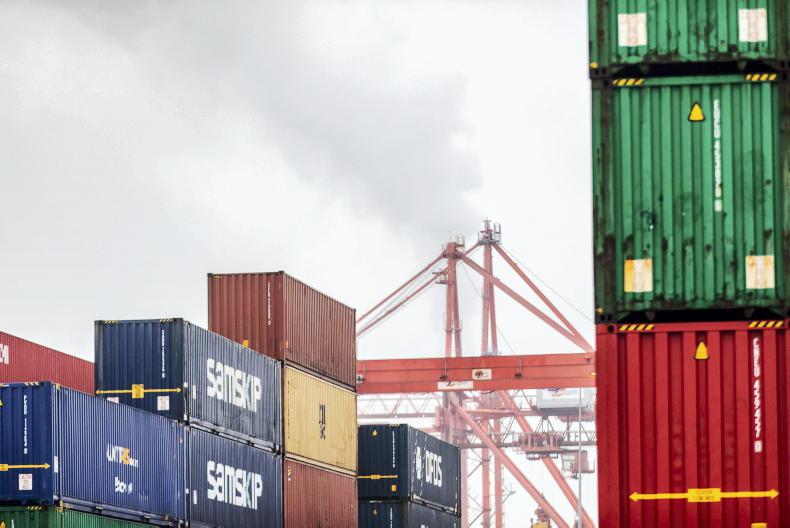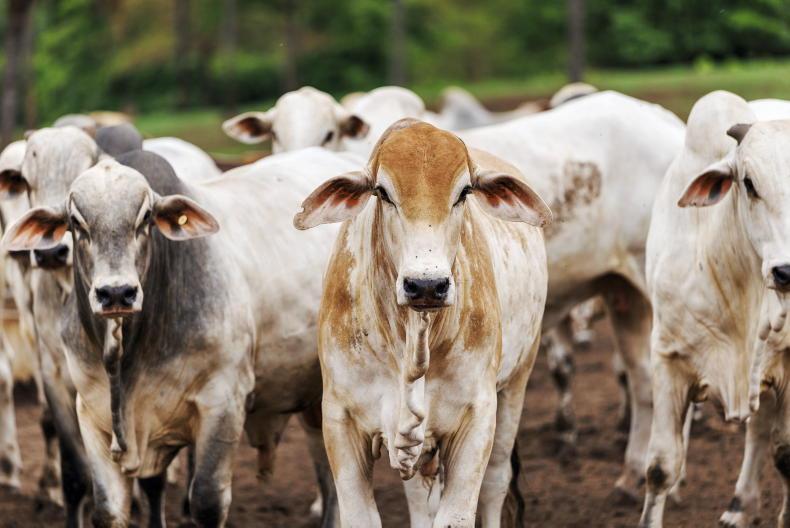China’s beef import volumes continued their upward trajectory in 2024, rising to 2.874m tonnes, another new record.
This was a 137,000t increase on the previous year and while it is a substantial increase, it nevertheless reflects the slowing pace of import growth volumes in recent years.
What is also particularly noticeable in a year when global beef prices were increasing is that the value of China’s beef imports fell for a second year in a row.
In 2024, the value of beef imported was the equivalent of €12.7bn, whereas the previous year the value was €13.1bn, despite less volume being imported.
The highest ever annual spend by China on beef imports was in 2022, when the value was €17bn for 2.689m tonnes of beef imported.
Main suppliers
Despite China being the world’s largest beef importer, taking more than twice the volume of the USA, which is the second largest, they have relatively few suppliers. In 2024, 97% of their beef imports came from just seven countries, as shown in Figure 1.
Brazil remains the top supplier with 1.340m tonnes in 2024, just under half of their total imports. In second place with 500,000t in 2024 was Argentina, followed by Uruguay on just under 245,000t, with Australia next on 216,000t.
The other significant suppliers were New Zealand on 150,538t, USA on 138,168t and Bolivia on 107,103t. All other countries, including Ireland, supplied 84,532t between them.
China was once the great hope as a new market for Irish beef exports, but trade has been stop-start because of atypical BSE cases causing suspension.
Irish exports were suspended for much of the year, meaning that the total volume was just 857t, well down on the previous year, which was a still modest 2,182t.
Sheepmeat and pork
China imported 366,503t of sheep and goat meat in 2024, down from 433,666t the previous year.
Virtually all of this comes from Australia and New Zealand, with the remaining 7,800t supplied by Uruguay and Argentina.
China imported 191,058t from Australia in 2024, down from 198,715t the previous year, while 167,740t came from New Zealand, down from 218,120t in 2023.
China’s pigmeat imports continued their downward trajectory in 2024, falling to just over 1m tonnes compared with over 1.5m tonnes in 2023.
All of their major suppliers dropped volume in 2024 compared with the previous year, with Spain down to 290,234t compared with 378,101t in 2023, while Brazil fell from 402,175t in 2023 to 236,989t last year.
Irish pigmeat export volumes also fell, from 32,973t in 2023 to 29,748t in 2024, making Ireland China’s 16th-largest supplier of imported pigmeat.
Irish beef exports never really got off the ground to China and we missed out on the period of rapid expansion in the decade to 2022.
However, Irish beef producers have benefited indirectly, as the growth in China’s demand for beef coincided with a parallel expansion in Brazilian - and to a lesser extent Argentinean - export growth.
The growing demand in China meant that the EU ceased being their primary export target.
We don’t have approval to export sheepmeat to China, but breaking into the market would be difficult even if we did.
Logistics mean that any exports would have to be tied in with beef exports and, in any case, Australia and New Zealand effectively have the market tied up.
China has been and will continue to be a significant market for Irish pigmeat, though demand will fluctuate in line with production volumes in China.
Read more
Dairy Trends: GDT rises by 1.4% as Chinese activity increases
Editorial: silent boom of the beef market
China’s beef import policy matters to Ireland
China’s beef import volumes continued their upward trajectory in 2024, rising to 2.874m tonnes, another new record.
This was a 137,000t increase on the previous year and while it is a substantial increase, it nevertheless reflects the slowing pace of import growth volumes in recent years.
What is also particularly noticeable in a year when global beef prices were increasing is that the value of China’s beef imports fell for a second year in a row.
In 2024, the value of beef imported was the equivalent of €12.7bn, whereas the previous year the value was €13.1bn, despite less volume being imported.
The highest ever annual spend by China on beef imports was in 2022, when the value was €17bn for 2.689m tonnes of beef imported.
Main suppliers
Despite China being the world’s largest beef importer, taking more than twice the volume of the USA, which is the second largest, they have relatively few suppliers. In 2024, 97% of their beef imports came from just seven countries, as shown in Figure 1.
Brazil remains the top supplier with 1.340m tonnes in 2024, just under half of their total imports. In second place with 500,000t in 2024 was Argentina, followed by Uruguay on just under 245,000t, with Australia next on 216,000t.
The other significant suppliers were New Zealand on 150,538t, USA on 138,168t and Bolivia on 107,103t. All other countries, including Ireland, supplied 84,532t between them.
China was once the great hope as a new market for Irish beef exports, but trade has been stop-start because of atypical BSE cases causing suspension.
Irish exports were suspended for much of the year, meaning that the total volume was just 857t, well down on the previous year, which was a still modest 2,182t.
Sheepmeat and pork
China imported 366,503t of sheep and goat meat in 2024, down from 433,666t the previous year.
Virtually all of this comes from Australia and New Zealand, with the remaining 7,800t supplied by Uruguay and Argentina.
China imported 191,058t from Australia in 2024, down from 198,715t the previous year, while 167,740t came from New Zealand, down from 218,120t in 2023.
China’s pigmeat imports continued their downward trajectory in 2024, falling to just over 1m tonnes compared with over 1.5m tonnes in 2023.
All of their major suppliers dropped volume in 2024 compared with the previous year, with Spain down to 290,234t compared with 378,101t in 2023, while Brazil fell from 402,175t in 2023 to 236,989t last year.
Irish pigmeat export volumes also fell, from 32,973t in 2023 to 29,748t in 2024, making Ireland China’s 16th-largest supplier of imported pigmeat.
Irish beef exports never really got off the ground to China and we missed out on the period of rapid expansion in the decade to 2022.
However, Irish beef producers have benefited indirectly, as the growth in China’s demand for beef coincided with a parallel expansion in Brazilian - and to a lesser extent Argentinean - export growth.
The growing demand in China meant that the EU ceased being their primary export target.
We don’t have approval to export sheepmeat to China, but breaking into the market would be difficult even if we did.
Logistics mean that any exports would have to be tied in with beef exports and, in any case, Australia and New Zealand effectively have the market tied up.
China has been and will continue to be a significant market for Irish pigmeat, though demand will fluctuate in line with production volumes in China.
Read more
Dairy Trends: GDT rises by 1.4% as Chinese activity increases
Editorial: silent boom of the beef market
China’s beef import policy matters to Ireland









SHARING OPTIONS